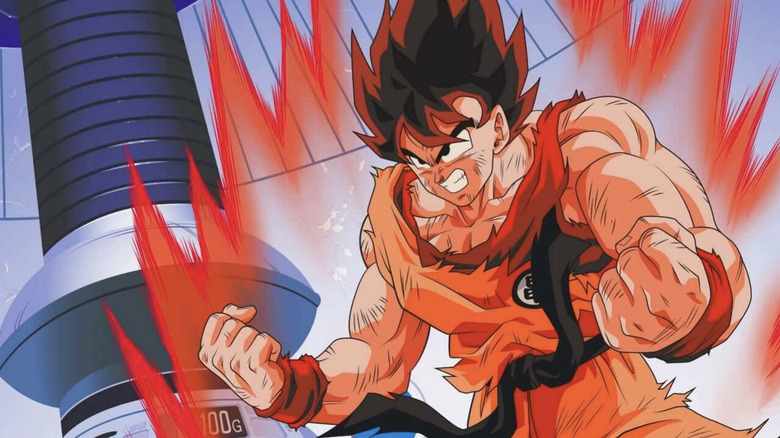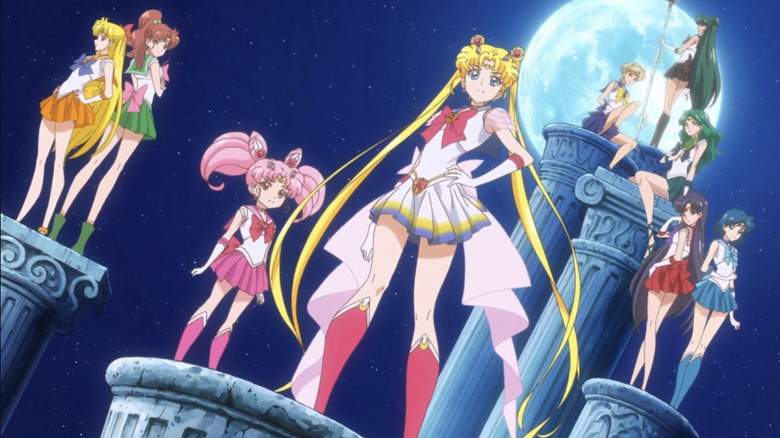The Three Classic Anime That Saved Cartoon Network's Toonami From Cancellation
On March 1, 2024, the legendary creator of "Dragon Ball," Akira Toriyama, passed away at the age of 68. It is legitimately impossible to encapsulate how influential and beloved Toriyama's work has become, but his epic tale of an aspiring martial artist named Goku who discovers magical wish-granting Dragon Balls became the definitive shōnen battle manga. Its follow-up series "Dragon Ball Z" would become an international sensation and served as one of the gateways to Japanese animation for audiences in the West.
I can only speak from my own experience, but "Sailor Moon," "Gundam Wing," and "Dragon Ball Z" were the holy trinity of animation for me as a kid, and I know I'm not alone. I was fortunate enough to catch random episodes of "Sailor Moon" on the USA Network, but everything changed when it was added to the Toonami programming block on Cartoon Network (later Adult Swim) that would completely change my life.
This trilogy of anime brilliance wasn't just influential for a generation of viewers, it was also what kept the lights on at Toonami. In 2017, Complex published an oral history of Toonami and spoke with founders Sean Akins and Jason DeMarco, and vital creatives behind the programming block to learn how it all came to be and help explain why it's still beloved to this day.
"In the beginning, it wasn't glamorous, said Akins. "There was literally no money to do anything." DeMarco said they operated under the impression that they could be canceled at any moment. They knew what they wanted Toonami to be, but the folks at the top weren't so sure. Then everything changed — once Toonami got their hands on "Sailor Moon," "Gundam Wing," and "Dragon Ball Z."
'We might have a hit on our hands'
The rights to "Sailor Moon" had expired at USA Network, so the team knew this was the perfect opportunity to bring magical girl anime to the programming block. It was Akins who really wanted "Dragon Ball Z," based on his own obsession with the series when he was younger. As he explained:
"When I was a kid we were still getting up at like six in the morning on our local Ultra High Frequency (UHF) channel to watch 'Dragon Ball Z.' And I thought, 'I know there are other kids like me doing this. I know people are sending around bootleg VHS tapes.' And I'm like 'I bet if we can get this thing and put it on at five in the afternoon, we might have a hit on our hands,' and we really did."
Toonami's success was boosted by the cultural phenomenon of Pokémon, which sparked an interest in other Japanese animation offerings for audiences in the West. DeMarco described building up Toonami as "working in a bubble" until Pokémon exploded in popularity when suddenly everyone was trying to get a piece of the anime action. The Bandai company saw the success of Toonami and felt the programming block was a great launchpad for its new "Gundam Wing" series in the United States. DeMarco and Atkins were thrilled and jumped at the opportunity. "That's the way it is now — it's still a mix of opportunities that come along, or us pushing for something because we like it or fans want it," said DeMarco.
"Although we have had our battles they weren't greater than anybody else's and in fact, because of the nature of Cartoon Network, they gave us way more freedom," he continued. "I don't think Toonami would've survived at Disney Channel for a year, let alone 20 years."

